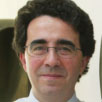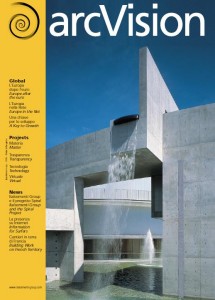Santiago Calatrava Valls (Beninamet, Valencia, July 28, 1951). His collaboration with Italcementi Group dates back to 2001 with the construction of the Quadracci Pavilion, expansion of the Milwaukee Art Museum a Milwaukee; and the Athens Olympic Sports Complex (OAKA) structuring dates back to 2004.
 Santiago Calatrava Valls (Beninamet, Valencia, July 28, 1951). 1974: degree in architecture at the School of Architecture and Arts and Crafts in Valencia. 1979: Bachelor of Civil Engineering in the Swiss Federal Institute of Technology (ETH) in Zürich, Switzerland. 1981: doctorate in Technical Science with a Ph.D. thesis “Concerning the Foldability of Spaceframes” (“Zur Faltbarkeit von Fachwerken”). 1981: beginning professional practice in Zurich. 1983: Baumwollhof Balcony, a neo-Liberty metal balcony hooked to a nineteenth-century building.
Santiago Calatrava Valls (Beninamet, Valencia, July 28, 1951). 1974: degree in architecture at the School of Architecture and Arts and Crafts in Valencia. 1979: Bachelor of Civil Engineering in the Swiss Federal Institute of Technology (ETH) in Zürich, Switzerland. 1981: doctorate in Technical Science with a Ph.D. thesis “Concerning the Foldability of Spaceframes” (“Zur Faltbarkeit von Fachwerken”). 1981: beginning professional practice in Zurich. 1983: Baumwollhof Balcony, a neo-Liberty metal balcony hooked to a nineteenth-century building.
He worked a s a structural engineer for Aldo Rossi for the construction of an office building in Buenos Aires; won with Bruno Reichlin and Fabio Rainhart the competition for the restyling of the Ernsting warehouse in Westphalia, where for the first time appears a spindle-like shape created by the union of two conoidal surfaces.
1985: first exhibition of sculptures at the Jamileh Weber Gallery in Zurich. Bach de Roda Felipe II Bridge in Barcelona, the first of a long series of infrastructures; Stadelhofen Railway Station in Zurich: this project was completed in 1990, and contributed to give him international fame. 1989: second office in Paris. 1991: Calatrava opened a a third office in Valencia.
1992: Calatrava’s profession underwent a drastic change thanks to the Barcelona Olympic Games and Seville Universal Expo. In the two cities Calatrava realized two works that launched him to fame: the Tower Montjuïc Communications Tower, the new contemporary landmark of the Catalan city, and the Kuwait Pavilion in Seville characterized by the mobile system of large structural “ribs”; in the same year he was assigned the Gold Medal of the Institute of Structural Engineers, London. The following years were characterized by solo exhibitions, international awards and professional activities focused mainly on bridges and large infrastructure nodes, first of all the great railway stations, especially in Spain, Switzerland and France. But there are interventions in the open space, as in the Plaza de Alcoy redesign in Spain (1995), where he took up the idea of the mobile structure experienced in Seville three years before, or large public buildings, such as the impressive City of Arts and Sciences in Valencia, which was completed in 2000. 2001 Quadracci Pavilion, expansion of the Milwaukee Art Museum in Milwaukee. 2004 Athens Olympic Sports Complex (OAKA), Athens.
Over the past decade he has been working as an architect and sculptor focusing on a smaller number of works but selected, while receiving awards and honors including the Grand Medaille d’Or of the Académie d’Architecture in Paris (2003) and the AIA Gold Medal (2005). 2006 Petah-Tikva, pedestrian bridge in Tel -Aviv, Israel. 2007, as first work realized in Italy the three bridges in Reggio Emilia, followed by the cover of the new A1 motorway exit and the Mediopadana TGV station. 2008, realization of the fourth bridge over the Grand Canal in Venice, between Piazzale Roma and Saint Lucia train station.
Calatrava divides his professional activity between the studios f New York and Zurich. Among his works in progress: City of Sport in Tor Vergata, Rome; World Trade Center Transportation Hub in New York.
Santiago Calatrava project’s on arcVision
Santiago Calatrava on arcVision.org
| Quadracci Pavilion |
Olympic Athletic Center of Athens (OAKA) |
|
 |
 |




